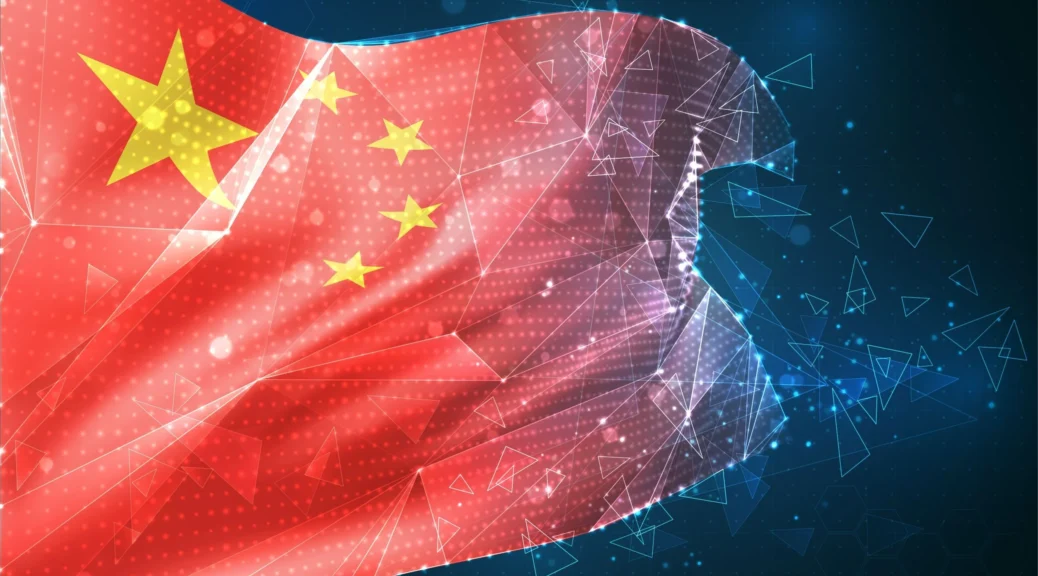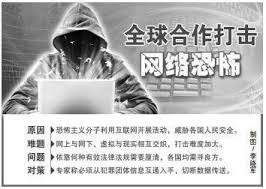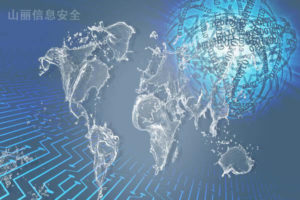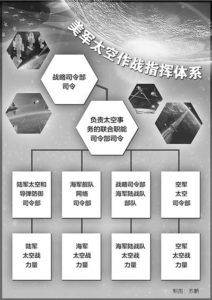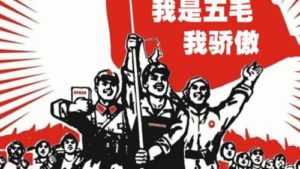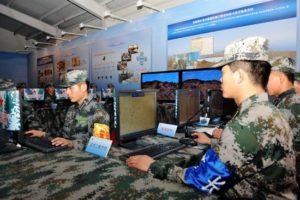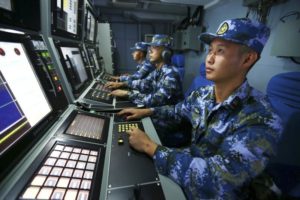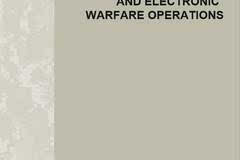Communist Chinese Fundamentals : Strategic Thinking of Network Power //
共產主義基本原理:網絡權力的戰略思考

Author: 中國共產黨
Date: 2017
Since the 18th National Congress of the Communist Party of China, the Party Central Committee with Comrade Xi Jinping has attached great importance to and vigorously promoted cybersecurity and informationization, profoundly grasped the characteristics of the development of the information age of human society, and objectively analyzed the current national conditions of China’s Internet development and the development of global Internet. The situation has successively issued a series of important speeches, and put forward a series of new ideas, new ideas and new theories on the governance of the Internet, and scientifically answered the major question of “why build a network power, build a network power and how to build a network power”. Formed Xi Jinping’s strategic thinking of network power. Seriously studying these new ideas is of great significance to promoting the building of a network-building nation and realizing the “two hundred years” struggle goal and the Chinese dream of the great rejuvenation of the Chinese nation.
First, why build a network power
On February 27, 2014, General Secretary Xi Jinping initially proposed the vision of building a network power in the first meeting of the Central Network Security and Informatization Leading Group, and systematically explained the background, situation, tasks and connotations of the network power. Requirements, thus making this idea a relatively complete, systematic theoretical system.
Xi Jinping put forward a rigorous logical relationship between the strategic thinking of the network power, starting from the foundation of the big power network, in view of the overall situation of the network business and the new situation changes, especially objectively analyzing the existing gap and strengthening the strategy of building a network power. aims. In his speech, Xi Jinping pointed out that in today’s world, the information technology revolution is changing with each passing day, which has had a profound impact on the development of international politics, economy, culture, society and military. Informatization and economic globalization have promoted each other, and the Internet has been integrated into all aspects of social life, profoundly changing people’s production and lifestyle. China is in the midst of this tide and is getting more and more affected. China’s Internet and informatization work has achieved remarkable development achievements. The network has entered thousands of households, and the number of Internet users is the highest in the world. China has become a big network country. This is our basic premise. He pointed out that the Internet is a big platform for social information. The hundreds of millions of Internet users have access to information and exchange information. This will have an important impact on their ways of seeking knowledge, ways of thinking, and values. In particular, they will be against the country, society, and Work and perceptions of life have an important impact. Xi Jinping emphasized that cybersecurity and informatization are all about the whole world of a country. We must recognize the situation and tasks we are facing, fully understand the importance and urgency of doing a good job, and seek for the situation. Take the trend and follow the trend. This is all about the whole. Xi Jinping pointed out that with the development of the Internet, especially the mobile Internet, the social governance model is shifting from one-way management to two-way interaction, from offline to online and offline integration, from simple government supervision to more emphasis on social coordinated governance. This is a change in the situation. In today’s world, information technology is developing very fast. If you don’t advance, you will retreat. Compared with the world’s advanced level, compared with the strategic goal of building a network power, we still have a lot of gaps in many aspects, especially in terms of Internet innovation capability, infrastructure construction, information resource sharing, and industrial strength. The biggest gap is in core technology.
Second, what kind of network power to build
Xi Jinping pointed out that without cyber security, there would be no national security, and without informationization, there would be no modernization. To build a network power, we must have our own technology and have strong technology; we must have rich and comprehensive information services, a prosperous and developing network culture; we must have a good information infrastructure to form a strong information economy; we must have a high-quality network. Security and information technology talent team; we must actively carry out bilateral and multilateral Internet international exchanges and cooperation. He also stressed that cyberspace is the spiritual home of hundreds of millions of people. The cyberspace is clear and ecological, and is in line with the interests of the people. The cyberspace is smouldering and deteriorating, and it is not in the interests of the people.
In a nutshell, there are at least six major signs of network power: First, the network information infrastructure must be at the world’s leading level. The second is to have a clear cyberspace strategy and a network voice in the international community. Third, the key technologies must be self-controllable, especially the operating system and CPU technology. Fourth, network security must have sufficient safeguards and capabilities. Fifth, network applications should be at the world’s leading level in terms of scale and quality. Sixth, in the cyberspace strategy, we must have the ability and strength to occupy the commanding heights.
The Outline of the National Informatization Strategy proposes that the construction of a network powerhouse is divided into three steps: the first step is to 2020, the total amount of information consumption will reach 6 trillion yuan, and the scale of e-commerce transactions will reach 38 trillion yuan. At the international advanced level, the international competitiveness of the information industry has been greatly enhanced, and information technology has become the leading force driving the modernization drive. The second step is to 20 billion yuan in information consumption by 2025, and the scale of e-commerce transactions has reached 67 trillion yuan. The leading mobile communication network fundamentally changes the core key technologies to be controlled by people, realizes the strategic goals of advanced technology, developed industry, advanced application, and insecure network security. A large number of large-scale multinational network enterprises with strong international competitiveness emerge; By the middle of this century, informationization has comprehensively supported the building of a socialist modernized country with rich, strong, democratic, civilized and harmonious relations. The status of a network powerhouse has been increasingly consolidated, and it has made greater achievements in leading the development of global informationization.
Xi Jinping planned the timetable for building a network powerhouse. The strategic deployment of building a network powerhouse should be promoted in parallel with the goal of “two hundred years”, the basic popularization of network infrastructure, the enhancement of independent innovation capability, the comprehensive development of information economy, and network security. Ensuring strong goals continue to advance.
Third, how to build a network power
(1) Fundamental requirements: People-centered
Governing the country is always the same, and the people are oriented. Xi Jinping emphasized that in order to develop the network business, it is necessary to implement the people-centered development thinking. It is necessary to adapt to people’s expectations and needs, accelerate the popularization of information services, reduce application costs, and provide useful, affordable and well-used information services for the people, so that hundreds of millions of people can gain more sense of sharing Internet development results. . Compared with cities, rural Internet infrastructure construction is our shortcoming. It is necessary to increase investment, speed up the pace of rural Internet construction, and expand the effective coverage of fiber-optic networks and broadband networks in rural areas. We can do a good job in the in-depth integration of informatization and industrialization, develop smart manufacturing, and drive more people to innovate and start a business; we can aim at the main direction of agricultural modernization, improve the level of agricultural production intelligence and network management, and help farmers increase their income; Give full play to the advantages of the Internet, implement “Internet + education”, “Internet + medical”, “Internet + culture”, etc., to promote the equalization of basic public services; can play the role of the Internet in helping to overcome poverty and promote accurate poverty alleviation and precision poverty alleviation, Let more difficult people use the Internet, let agricultural products go out of the country through the Internet, and enable children in the ravine to receive quality education; accelerate the promotion of e-government, encourage government departments at all levels to break down information barriers, improve service efficiency, and let the people run less errands. More information, running, solving problems that are difficult to handle, slow, and complicated. There are many things to do in these areas. Some Internet companies have already tried and achieved good economic and social benefits.
On November 29, 2016, the National Network Poverty Alleviation Work Promotion Meeting was held in Ningdu, Jiangxi. “We must implement the network poverty alleviation action, promote accurate poverty alleviation, and accurately eliminate poverty, so that poverty alleviation work can be accessible anytime and anywhere, so that people in poverty-stricken areas have more sense of gaining in the Internet construction and sharing.” General Secretary Xi is an important indicator in the old Red Revolution. Once again, the network’s poverty alleviation has become a new lever to win the overall well-off.
(II) Concept requirements: Practicing the five development concepts
The Fifth Plenary Session of the 18th CPC Central Committee put forward a new development concept of innovation, coordination, green, openness and sharing. This is based on profoundly summarizing domestic and foreign development experience and lessons, and in-depth analysis of domestic and international development trends. Our party has a new understanding of China’s economic and social development laws. Promoting China’s economic and social development in accordance with the new development concept is the general requirement and general trend of China’s development in the current and future period. The ancients said: “At any time, to raise things, to make meritorious deeds due to capital, and to profit from the power of all things.” The development of China’s online letter business should adapt to this general trend. Generally speaking, the network letter business represents new productivity and new development direction, and should be able to take the lead in practicing the new development concept.
Innovation is the core strength of the development of the network business. Innovation is the genes of Internet development. The concept innovation and technological innovation of the Internet are the needs of its own development. If there is no progress in the Internet tide, there will be no living space without innovation. We must always place innovation at the forefront, promote institutional and institutional innovation, concept innovation, technological innovation, and application innovation, and support the encouragement of Internet entrepreneurs, leading talents, and engineers to create and create innovative technologies for the development of the Internet. Xi Jinping pointed out at the 2nd World Internet Conference: “China is implementing the ‘Internet +’ action plan, promoting the construction of ‘Digital China’, developing the sharing economy, supporting various Internet-based innovations, and improving the quality and efficiency of development.”
Coordination is the inherent requirement of the development of the network business. Whether it is domestic or foreign, there are problems of unbalanced and uncoordinated development of network security and informationization. To solve these problems, we must establish a concept of coordinated development, eliminate the digital divide, narrow the gap between urban and rural areas, regional differences, and ensure information security. Balanced development, all-round development, and safe development. At the first meeting of the Central Network Security and Informatization Leading Group, Xi Jinping pointed out: “From the international and domestic general trend, the overall layout, co-ordinate all parties, innovation and development, and strive to build China into a network power.”
Green development is an important guarantee for the healthy development of the network business. The information industry is a green industry. Informationization and networking are supporting the application and upgrading of industries, agriculture, and national defense, and promoting green development, low-carbon development, and circular development. It is necessary to carry forward the main theme, spread positive energy, and make the cyberspace clear. At the symposium on April 19, 2016, Xi Jinping pointed out: “The cyberspace is clear and ecological, and it is in line with the interests of the people. The cyberspace is smouldering and ecologically degraded, which is not in the interest of the people.” He also stressed: “We want this Responsible for the society and responsible for the people, strengthen the cyberspace governance in accordance with the law, strengthen the construction of online content, strengthen the positive publicity on the Internet, foster a positive and healthy, up-to-good network culture, and nourish the social core values and the outstanding achievements of human civilization. People’s hearts, nourish the society, and achieve positive energy and high melody, creating a clean and cyberspace for the majority of Internet users, especially young people.”
Openness is the essential feature of the development of the network business. The Internet has opened the door to openness in all countries of the world. Xi Jinping pointed out: “The Internet has turned the world into a global village where the sound of chickens and dogs is heard. People who are thousands of miles away are no longer ‘old and dead.’ It can be said that the world is more colorful because of the Internet, and life is more because of the Internet. Rich.” The development of China’s Internet industry is inseparable from the world, and the Internet industry in the world cannot be separated from China. Xi Jinping pointed out at the Second World Internet Conference: “The Internet in China is booming, providing a broad market space for enterprises and entrepreneurs in various countries. The door to China’s opening will never be closed, and the policy of using foreign capital will not change. Foreign-invested enterprises The protection of legitimate rights and interests will not change, and the direction for countries and enterprises to provide better services in China will not change. He also stressed: “All countries should promote open cooperation in the Internet field, enrich the open connotation, increase the level of openness, and build more Communicate and cooperate with the platform to create more points of interest, cooperation growth, and win-win new highlights, and promote mutual complementarity and common development in the cyberspace, so that more countries and people can take advantage of the information age of express trains and share Internet development results.” We must actively participate in international Internet exchanges and cooperation, learn from the advanced experience and technological achievements of countries around the world, grasp and lead the development trend of the Internet, and promote open cooperation and mutual benefit for cyberspace.
Sharing is the fundamental purpose of the development of the network business. Serving the people and benefiting the people’s livelihood is the fundamental starting point and the foothold of China’s Internet development. Xi Jinping stressed: “In order to develop the network, the company must implement the people-centered development thinking. It is necessary to adapt to the people’s expectations and needs, accelerate the popularization of information services, reduce the application cost, and provide the people with the necessary, affordable and useful. Good information services will enable hundreds of millions of people to gain more sense of sharing Internet development results. “We must push the network into thousands of households and guide the people to understand the world, master information, exchange ideas, innovate and improve, and improve through the Internet. Life, let the Internet development achievements not only benefit the 1.3 billion Chinese people, but also benefit the people of all countries in the world.
(3) Governance requirements: safety and development go hand in hand
In 2014, Xi Jinping emphasized at the first meeting of the Central Network Security and Informatization Leading Group that “maintenance of network space security and network data integrity, security, reliability, and maintenance of network space security capabilities.” He also called for the overall relationship between network security and informatization. “Network security and informatization are two wings and two wheels of integration. They must be unified planning, unified deployment, unified promotion, and unified implementation. Do a good job in network security and informationization. Work, we must handle the relationship between security and development, to achieve coherence, go hand in hand, to ensure development by safety, to promote safety through development, to strive to build a long-term security, growth and governance.” Two years later, at the symposium, he pointed out again “Network security and informatization are mutually reinforcing. Security is the premise of development, development is the guarantee of security, and security and development must advance simultaneously. From a global perspective, cybersecurity threats and risks are increasingly prominent, and increasingly toward politics, economy, Conductive penetration in the fields of culture, society, ecology, national defense, etc., especially the key information infrastructure of the country Face greater potential risks, prevention and control of network security capability is weak, it is difficult to effectively deal with national, organized high-strength network attacks. This is a problem for the world, we are certainly no exception. “
In addition, he pointed out that “in the face of complex and severe network security situation, we must remain clear-headed, and all parties must jointly manage and effectively maintain network security.” First, establish a correct view of network security. The idea determines the action. There are several main features of today’s network security. First, cybersecurity is holistic rather than fragmented. Second, network security is dynamic rather than static. Third, cybersecurity is open rather than closed. Fourth, cybersecurity is relative rather than absolute. Fifth, cybersecurity is common rather than isolated. Second, accelerate the construction of a key information infrastructure security system. Third, all-weather perception of the network security situation. Fourth, enhance network security defense capabilities and deterrence capabilities.
(4) Cadre requirements: Take the network mass line and build a concentric circle
The mass line is the fundamental line of our party. Xi Jinping pointed out: “The netizens come from the common people, the people are on the net, and the public opinion is on the net. Where are the people, where are our leading cadres going, or how to contact the masses? Party and government organs and leading cadres at all levels must learn Take the mass route through the Internet, often go online to see, dive, chat, and voice, understand what the masses think, collect good ideas and suggestions, and actively respond to netizens’ concerns and doubts. Be good at using the Internet to understand public opinion and work. It is the basic skill of leading cadres to do their work well under the new situation.”
How to take the network mass route? Xi Jinping gave the method. “The majority of netizens are ordinary people, come from all directions, and their experiences are different. The opinions and ideas must be varied. They cannot be asked to be so accurate and correct about all issues. To be more inclusive. And patience, timely absorption of constructive opinions, timely assistance for difficulties, timely referrals to those who do not understand the situation, timely clarification of vague understanding, timely resolution of complaints of resentment, timely guidance and correction of wrong opinions, Let the Internet become a new platform for us to communicate and communicate with the masses, and become a new way to understand the masses, be close to the masses, solve problems for the masses, and become a new channel for carrying forward people’s democracy and accepting people’s supervision.”
At the same time, Xi Jinping pointed out the efforts of cadres at all levels. “To correctly handle the relationship between security and development, openness and autonomy, management and service, and constantly improve the ability to grasp the laws of the Internet, the ability to guide the public opinion, and the development of informationization. Capabilities, the ability to guarantee network security, and the continuous advancement of network power construction.”
(5) Management requirements: unified leadership, management according to law
The Political Bureau of the CPC Central Committee conducted the 36th collective study on the implementation of the strategy of strengthening the country by the Internet. Accelerate the improvement of network management.
Xi Jinping put forward requirements from the institutional mechanism. He emphasized that the central cybersecurity and informationization leading group should play a centralized and unified leadership role, coordinate and coordinate major issues of cybersecurity and informatization in various fields, and formulate and implement national cybersecurity and informationization development strategies. , macro-planning and major policies, continuously enhance security and security capabilities.
Instructed from the management ideas, in China, more than 700 million people on the Internet, certainly need to manage, and this management is very complicated and very heavy. Enterprises must assume the responsibility of enterprises, and the party and the government must assume the responsibility of the party and the government. No side can give up their responsibilities. It is necessary to deeply understand the role of the Internet in state management and social governance, and to promote e-government and build a new smart city, and to build a nationally integrated national big data center with data concentration and sharing as a way to promote technology integration. Business integration, data integration, and cross-level, cross-regional, cross-system, cross-department, and cross-business collaborative management and services. It is necessary to strengthen the Internet thinking, take advantage of the flat, interactive and rapid advantages of the Internet, promote the scientific decision-making of the government, the precision of social governance, the efficiency of public services, and better use the means of information to better understand the social situation, smooth communication channels, and assist decision-making governance. .
From the legislative norms to point out the direction, we must promptly formulate legislative plans, improve Internet information content management, key information infrastructure protection and other laws and regulations, manage cyberspace in accordance with the law, and safeguard the legitimate rights and interests of citizens. It is necessary to strictly guard against cybercrime, especially new cybercrime, and safeguard the interests of the people and the harmony and stability of society. It is necessary to speed up the process of network legislation, improve the regulatory measures according to law, and resolve network risks. It is necessary to strengthen the management of big data in accordance with the law. Some data concerning national interests and national security are in the hands of Internet companies, and enterprises must ensure the security of these data. Enterprises should pay attention to data security. If the company has problems with data protection and security, it will also have an adverse impact on its own reputation.
It also puts forward hopes for the whole society. Network security is for the people, network security depends on the people, and maintaining network security is the common responsibility of the whole society. It requires the government, enterprises, social organizations and the majority of netizens to participate in the construction of a network security defense line. These characteristics must be well grasped by all relevant parties.
(6) Guarantee requirements: technological breakthroughs, construction of infrastructure and sharing systems
Xi Jinping emphasized that in order to grasp the initiative of China’s Internet development and safeguard Internet security and national security, we must break through the core technology and strive to achieve “curve overtaking” in certain areas and in certain aspects. To achieve breakthroughs in core technologies, we must have determination, perseverance, and focus. He hopes that the vast number of entrepreneurs, experts, scholars and scientific and technological personnel in the field of China’s online information should establish this ambition, strive for this tone, and strive to achieve new major breakthroughs in core technology as soon as possible. The so-called “days, not afraid of thousands of miles; often do, not afraid of thousands of things.”
Xi Jinping stressed that it is necessary to firmly hold the core technology of independent innovation, and to break through the cutting-edge technologies of network development and key core technologies with international competitiveness, accelerate the promotion of domestically controlled independent alternative plans, and build a safe and controllable information technology system. . First, correctly handle open and autonomous relationships. Second, concentrate on the scientific research investment to do big things. Third, actively promote the transformation of core technological achievements. Fourth, promote strong alliances and coordinated research. Fifth, we can explore the formation of an alliance of industry, academia and research, and open the list. To lay a solid foundation for the research and development of core technologies, it is necessary not only to blow up the charge, but also to blow up the collection number, that is, to accumulate the strongest forces together to form the commando and special forces.
Xi Jinping stressed that it is necessary to speed up the construction of a key information infrastructure security system. The key information infrastructure in the fields of finance, energy, electricity, communications, transportation, etc. is the nerve center of economic and social operation, the top priority of network security, and the target of possible key attacks. The “physical isolation” line of defense can be invaded across the network, the power allocation instructions can be maliciously tampered with, and the financial transaction information can be stolen. These are major risk hazards. If there is no problem, it will cause traffic disruption, financial disorder, power hupfer and other issues, which is very destructive and lethal. We must conduct in-depth research and take effective measures to effectively protect the country’s critical information infrastructure.
At the same time, he pointed out that it is necessary to promote the modernization of the national governance system and governance capacity through informationization, coordinate the development of e-government, build an integrated online service platform, promote the construction of new smart cities by hierarchical classification, open up information barriers, and build a national information resource sharing system. It is easy to use information technology to sense social situation, smooth communication channels, and assist scientific decision-making.
(7) Propaganda requirements: the most important thing, to build consensus
Xi Jinping pointed out that we must adhere to the attitude of being responsible to the society and responsible to the people, strengthen the cyberspace governance in accordance with the law, strengthen the construction of online content, strengthen the positive publicity on the Internet, foster a positive and healthy, up-to-good network culture, and use the socialist core values. outstanding achievements of human civilization and nourishing the heart, nourishing community, so that positive energy is abundant, the main theme of the high for the majority of Internet users, especially young people to create a Delicate gas is cyberspace.
Do online media work is a long-term task to improve the online promotion of innovation, the use of propagation network, promote the theme, stimulate positive energy, great efforts to cultivate and practice the socialist core values, when good grasp of the Internet to guide public opinion, and validity To make the cyberspace clear.
Forming a good online public opinion atmosphere is not to say that there can only be one voice, one tone, but that it cannot be used to confess right and wrong, reverse black and white, make a living, commit crimes, and cannot transcend the legal boundaries of the Constitution. An important means to put power into the cage of the system is to play the role of public opinion supervision, including Internet supervision. This article, party and government organs and leading cadres at all levels must pay special attention to, first of all, do a good job. We must not only welcome, but also carefully study and learn from the online criticism of goodwill and the supervision of the Internet, whether it is for the work of the party and the government or for the leading cadres, whether it is ruthless or loyal.
Xi Jinping pointed out that the new application of new technologies and new technologies in the Internet has made the social mobilization function of the Internet increasingly enhanced. To spread positive energy, enhance communication and guiding force. It is necessary to strictly guard against cybercrime, especially new cybercrime, and safeguard the interests of the people and the harmony and stability of society. It is necessary to give full play to the advantages of network communication, experience, and sharing, listen to the will of the people, benefit the people’s livelihood, solve the people’s worries, and unite the social consensus. Online and offline networks should be united and coordinated, forming a good situation for jointly preventing social risks and building a concentric circle together. It is necessary to maintain the security of cyberspace and the integrity, security and reliability of network data, and improve the security of maintaining cyberspace.
Xi Jinping pointed out that the new application of new technologies and new technologies in the Internet has made the social mobilization function of the Internet increasingly enhanced. To spread positive energy, enhance communication and guiding force. It is necessary to give full play to the advantages of network communication, experience, and sharing, listen to the will of the people, benefit the people’s livelihood, solve the people’s worries, and unite the social consensus. Online and offline networks should be united and coordinated, forming a good situation for jointly preventing social risks and building a concentric circle together.
(8) Talent requirements: unrestricted talents
“The people are happy, the losers are falling.” Xi Jinping stressed that to build a network power, we must bring together talent resources and build a strong team with strong politics, good business and good work style. “A thousand troops are easy to get, and one will be hard to find.” It is necessary to train scientists, network technology leaders, engineers, and high-level innovation teams that have created world-class skills.
In terms of ideas, he pointed out that the competition in cyberspace is, in the final analysis, talent competition. Building a network power, there is no outstanding talent team, no talent creation, vitality, and it is difficult to succeed. After reading the talents, you can get twice the result with half the effort. Our brains have to turn around, not only paying attention to capital, but also paying attention to talents. The intensity of introducing talents should be further increased, and the steps of reforming the talent system should be further developed. The field of network information can be tested first, and research should be carried out to formulate ways to attract talents, train talents, and retain talents.
In terms of scope, he pointed out that the development of China’s online letter industry must fully mobilize the enthusiasm, initiative and creativity of entrepreneurs, experts, scholars and scientific and technological personnel. Entrepreneurs, experts, scholars, and scientific and technological personnel must have the responsibility of the state and social responsibility, and contribute their wisdom and strength to the development of the national network. Party committees and governments at all levels must respect knowledge and respect talents from the bottom of their hearts, create good conditions for talents to develop their intelligence, create a relaxed environment, and provide a broad platform.
In terms of methods, he pointed out that the Internet is mainly the cause of young people, and it is necessary to reduce talents. It is necessary to emancipate the mind, to recognize the talents, and to love the talents. To train netizen talents, we must make great efforts and make big money. We invite excellent teachers, compile excellent teaching materials, recruit outstanding students, and build a first-class cyberspace security college. Many talents in the Internet field are geeks and geniuses. They often do not take the usual routines and have many whimsy. There must be special policies for treating special talents, not requiring full blame, not arguing for seniority, and not using a ruler.
In terms of policy, he pointed out that it is necessary to adopt special policies, establish a personnel system and a salary system that adapt to the characteristics of online letters, and condense outstanding talents into technical departments, research departments, and management departments. It is necessary to establish a talent evaluation mechanism that adapts to the characteristics of online letters. The actual ability is the standard of measurement. It is not only academic, not only a thesis, not only a qualification, but also highlights professionalism, innovation and practicality. It is necessary to establish a flexible talent incentive mechanism to enable those who contribute to have a sense of accomplishment and a sense of acquisition. It is necessary to explore scientific research results, intellectual property rights, and interest distribution mechanisms in the field of online information, and formulate specific policies on talent stock participation, technology shareholding, and taxation. In the flow of talents, we must break the institutional boundaries and enable talents to achieve an orderly and smooth flow between the government, enterprises, and think tanks. The advantages of the “revolving door” system in foreign countries can also be used for reference.
At the station, he pointed out that there must be a global perspective on talent selection and the introduction of high-end talents. As China’s comprehensive national strength continues to increase, many countries’ talents also hope to come to China for development. We must take advantage of the trend, reform talents to introduce various supporting systems, and build a globally competitive talent system. No matter which country or region, as long as it is a good talent, it can be used for me. This work has been done by some enterprises and research institutes. I went to some enterprises and research institutes, and also talked with these talents imported from abroad. In this regard, we must increase our efforts to continuously improve our ability to allocate talent resources globally.
(9) Industry requirements: focus on self-discipline and healthy development
The development of a company is directly proportional to its social responsibility. Xi Jinping pointed out that China’s Internet enterprises have played an important role in stabilizing growth, promoting employment, and benefiting people’s livelihood, from small to large, from weak to strong. Let the company continue to develop healthily is not only the goal of entrepreneurs but also the needs of national development. The fate of a company is closely related to the development of the country. It is difficult to become stronger and bigger than the support of the state, the disengagement of the masses, and the service to the country and the people.
How to be stronger and bigger? Xi Jinping pointed out the direction: internally, it is necessary to introduce policies to support the development of enterprises, so that they become the main body of technological innovation and become the main body of information industry development. Externally, we must encourage and support China’s network enterprises to go out, deepen Internet international exchanges and cooperation, and actively participate in the construction of the “Belt and Road” to achieve “where the national interests are and where informationization will be covered”. Foreign Internet companies, as long as they comply with our laws and regulations, we are welcome.
How to avoid the phenomenon of “disconnecting one after another, killing one tube” that has often appeared in the past, and embarking on a new road of joint management and benign interaction? Xi Jinping gave the idea: First, insist on encouraging support and standard development in parallel. Enterprises should be encouraged and supported to become the main body of R&D, the main body of innovation, and the main body of industry. Encourage and support the cutting-edge technology of enterprise layout, promote independent innovation of core technologies, create and seize more opportunities, participate in international competition, and expand overseas development space. It is necessary to regulate market order and encourage healthy competition. The Fourth Plenary Session of the 18th CPC Central Committee proposed to improve the system of property rights protection with fairness as the core principle, strengthen the protection of property rights of various ownership economic organizations and natural persons, and clean up laws and regulations that violate fairness. These requirements should be put in place as soon as possible. Second, adhere to policy guidance and management according to law. The government should create a favorable environment for enterprise development, accelerate the reform of the examination and approval system, financing system, and patent system, reduce duplication of testing and certification, implement a high-quality and high-price government procurement system, reduce the burden on enterprises, and remove institutional and institutional obstacles. At the same time, it is necessary to speed up the process of network legislation, improve the regulatory measures according to law, and resolve network risks. It is necessary to strengthen the management of big data in accordance with the law. Third, adhere to both economic and social benefits. Only a wealth of love is a truly meaningful asset. Only a company that actively assumes social responsibility is the most competitive and vital enterprise. It is hoped that the vast number of Internet companies will adhere to the unity of economic and social benefits, and at the same time of their own development, drink water and source, return the society and benefit the people. We must encourage and support our networked enterprises to go out, deepen the international exchanges and cooperation in the Internet, and actively participate in the construction of the “Belt and Road” to achieve “where the national interests are and where informationization will be covered”. Foreign Internet companies, as long as they comply with our laws and regulations, we are welcome.
(10) International requirements: building a community of destiny
With the multi-polarization of the world, economic globalization, cultural diversity, and in-depth development of social information, the Internet will play a greater role in promoting the progress of human civilization. At the same time, problems such as unbalanced development in the Internet field, unsound rules, and unreasonable order have become increasingly prominent. The information gap between different countries and regions is constantly widening. Existing cyberspace governance rules are difficult to reflect the wishes and interests of most countries; violations of personal privacy, intellectual property rights, cybercrime, etc. occur worldwide, network monitoring, cyber attacks, networks Terrorism and other activities have become global public nuisances.
Faced with these problems and challenges, the international community should strengthen dialogue and cooperation on the basis of mutual respect and mutual trust, promote the reform of the global governance system of the Internet, and jointly build a cyberspace of peace, security, openness and cooperation, and establish multilateral, democratic and transparent. The global Internet governance system. It is proposed that “China is willing to work with the international community to adhere to the common prosperity of mankind, adhere to the concept of cyber sovereignty, promote global Internet governance in a more just and rational direction, and promote cyberspace to achieve equal respect, innovative development, open sharing, and security. The goal of the order.”
“The way of benefit is to go with time.” Cyberspace is the common space for human activities. The future of cyberspace should be mastered by all countries in the world. To promote the reform of the global Internet governance system, we should adhere to the four principles. Respect network sovereignty. Maintain peace and security. Promote open cooperation. Build a good order. Countries should strengthen communication, expand consensus, deepen cooperation, and jointly build a community of cyberspace destiny. In this regard, I would like to make five points. First, accelerate the construction of global network infrastructure and promote interconnection. Second, create an online cultural exchange and sharing platform to promote exchanges and mutual learning. Third, promote the innovation and development of the network economy and promote common prosperity. Fourth, safeguard network security and promote orderly development. Fifth, build an Internet governance system to promote fairness and justice. It has won the approval of most countries in the world.
Xi Jinping pointed out that the Internet is the common home of mankind and works together to build a community of cyberspace destiny. It is the common responsibility of the international community to make this home more beautiful, cleaner and safer. Let us join hands to jointly promote the interconnection and sharing of cyberspace, share common governance, and help create a better future for human development!
Original Mandarin Chinese:

黨的十八大以來,以習近平同志為核心的黨中央高度重視、大力推進網絡安全和信息化工作,深刻把握人類社會發展信息時代階段特徵,客觀分析當前我國互聯網發展基本國情及全球互聯網發展新形勢,先後發表了一系列重要講話,提出了一系列治網新理念新思想新論斷,科學回答了“為什麼要建設網絡強國、建設什麼樣的網絡強國以及怎樣建設網絡強國”這一重大問題,形成了習近平網絡強國戰略思想。認真學習這些新思想,對於推進網絡強國建設,實現“兩個一百年”奮鬥目標和中華民族偉大復興的中國夢具有重要意義。
一、為什麼建設網絡強國
2014年2月27日,習近平總書記在中央網絡安全和信息化領導小組第一次會議上初步提出了建設網絡強國的願景目標,並系統闡釋了網絡強國戰略思想的時代背景、形勢任務、內涵要求,從而使這一思想成為相對完整、系統的理論體系。
習近平提出網絡強國戰略思想的有著嚴謹的邏輯關係,從網絡大國的基礎出發,鑑於網信事業事關全局和麵臨的新形勢轉變,尤其是客觀剖析了存在的差距,堅定了建設網絡強國的戰略目標。習近平在講話中指出,當今世界,信息技術革命日新月異,對國際政治、經濟、文化、社會、軍事等領域發展產生了深刻影響。信息化和經濟全球化相互促進,互聯網已經融入社會生活方方面面,深刻改變了人們的生產和生活方式。我國正處在這個大潮之中,受到的影響越來越深。我國互聯網和信息化工作取得了顯著發展成就,網絡走入千家萬戶,網民數量世界第一,我國已成為網絡大國。這是我們的基礎前提。他指出,互聯網是一個社會信息大平台,億萬網民在上面獲得信息、交流信息,這會對他們的求知途徑、思維方式、價值觀念產生重要影響,特別是會對他們對國家、對社會、對工作、對人生的看法產生重要影響。習近平強調,網絡安全和信息化對一個國家很多領域都是牽一發而動全身的,要認清我們面臨的形勢和任務,充分認識做好工作的重要性和緊迫性,因勢而謀,應勢而動,順勢而為。這是事關全局。習近平指出,隨著互聯網特別是移動互聯網發展,社會治理模式正在從單向管理轉向雙向互動,從線下轉向線上線下融合,從單純的政府監管向更加註重社會協同治理轉變。這是形勢轉變。當今世界,信息化發展很快,不進則退,慢進亦退。同世界先進水平相比,同建設網絡強國戰略目標相比,我們在很多方面還有不小差距,特別是在互聯網創新能力、基礎設施建設、信息資源共享、產業實力等方面還存在不小差距,其中最大的差距在核心技術上。
二、建設什麼樣的網絡強國
習近平指出,沒有網絡安全就沒有國家安全,沒有信息化就沒有現代化。建設網絡強國,要有自己的技術,有過硬的技術;要有豐富全面的信息服務,繁榮發展的網絡文化;要有良好的信息基礎設施,形成實力雄厚的信息經濟;要有高素質的網絡安全和信息化人才隊伍;要積極開展雙邊、多邊的互聯網國際交流合作。他還強調,網絡空間是億萬民眾共同的精神家園。網絡空間天朗氣清、生態良好,符合人民利益。網絡空間烏煙瘴氣、生態惡化,不符合人民利益。
概括地講,網絡強國至少有六大標誌:一是網絡信息化基礎設施要處於世界領先水平。二是要有明確的網絡空間戰略和國際社會中的網絡話語權。三是關鍵技術上要自主可控,特別是操作系統和CPU技術。四是網絡安全要有足夠的保障手段和能力。五是網絡應用在規模、質量等方面要處在世界領先水平。六是在網絡空間戰略中,要有佔領制高點的能力和實力。
《國家信息化戰略綱要》提出,建設網絡強國具體分三步走:第一步到2020年,信息消費總額達到6萬億元,電子商務交易規模達到38萬億元,核心關鍵技術部分領域達到國際先進水平,信息產業國際競爭力大幅提升,信息化成為驅動現代化建設的先導力量;第二步到2025年,信息消費總額達到12萬億元,電子商務交易規模達到67萬億元,建成國際領先的移動通信網絡,根本改變核心關鍵技術受制於人的局面,實現技術先進、產業發達、應用領先、網絡安全堅不可摧的戰略目標,湧現一批具有強大國際競爭力的大型跨國網信企業;第三步到本世紀中葉,信息化全面支撐富強民主文明和諧的社會主義現代化國家建設,網絡強國地位日益鞏固,在引領全球信息化發展方面有更大作為。
習近平規劃了建設網絡強國的時間表,建設網絡強國的戰略部署要與“兩個一百年”奮鬥目標同步推進,向著網絡基礎設施基本普及、自主創新能力顯著增強、信息經濟全面發展、網絡安全保障有力的目標不斷前進。
三、怎樣建設網絡強國
(一)根本要求:以人民為中心
治國有常,而利民為本。習近平強調,網信事業要發展,必須貫徹以人民為中心的發展思想。要適應人民期待和需求,加快信息化服務普及,降低應用成本,為老百姓提供用得上、用得起、用得好的信息服務,讓億萬人民在共享互聯網發展成果上有更多獲得感。相比城市,農村互聯網基礎設施建設是我們的短板。要加大投入力度,加快農村互聯網建設步伐,擴大光纖網、寬帶網在農村的有效覆蓋。可以做好信息化和工業化深度融合這篇大文章,發展智能製造,帶動更多人創新創業;可以瞄準農業現代化主攻方向,提高農業生產智能化、經營網絡化水平,幫助廣大農民增加收入;可以發揮互聯網優勢,實施“互聯網+教育”、“互聯網+醫療”、“互聯網+文化”等,促進基本公共服務均等化;可以發揮互聯網在助推脫貧攻堅中的作用,推進精準扶貧、精準脫貧,讓更多困難群眾用上互聯網,讓農產品通過互聯網走出鄉村,讓山溝裡的孩子也能接受優質教育;可以加快推進電子政務,鼓勵各級政府部門打破信息壁壘、提升服務效率,讓百姓少跑腿、信息多跑路,解決辦事難、辦事慢、辦事繁的問題,等等。這些方面有很多事情可做,一些互聯網企業已經做了嘗試,取得了較好的經濟效益和社會效益。
2016年11月29日,全國網絡扶貧工作現場推進會在江西寧都召開。 “要實施網絡扶貧行動,推進精準扶貧、精準脫貧,讓扶貧工作隨時隨地、四通八達,讓貧困地區群眾在互聯網共建共享中有更多獲得感”,習總書記這一重要指示在紅色革命老區再次宣示,網絡扶貧成為決勝全面小康的新槓桿。
(二)理念要求:踐行五大發展理念先行一步
黨的十八屆五中全會提出了創新、協調、綠色、開放、共享的新發展理念,這是在深刻總結國內外發展經驗教訓、深入分析國內外發展大勢的基礎上提出的,集中反映了我們黨對我國經濟社會發展規律的新認識。按照新發展理念推動我國經濟社會發展,是當前和今後一個時期我國發展的總要求和大趨勢。古人說:“隨時以舉事,因資而立功,用萬物之能而獲利其上。”我國網信事業發展要適應這個大趨勢。總體上說,網信事業代表著新的生產力、新的發展方向,應該也能夠在踐行新發展理念上先行一步。
創新是網信事業發展的核心力量。創新是互聯網發展的基因。互聯網的理念創新、技術創新是自身發展的需要,在互聯網大潮中不進則退,沒有創新就沒有生存空間。要始終把創新擺在首要位置,推動體制機制創新、理念創新、技術創新、應用創新,支持鼓勵互聯網企業家、領軍人才和工程技術人員創新創造,為互聯網發展提供不竭動力。習近平在第二屆世界互聯網大會上指出:“中國正在實施‘互聯網+’行動計劃,推進‘數字中國’建設,發展分享經濟,支持基於互聯網的各類創新,提高發展質量和效益。”
協調是網信事業發展的內在要求。無論是國內還是國外,都存在網絡安全和信息化發展不平衡、不協調的問題,解決這些問題,就要樹立協調發展的理念,消除數字鴻溝,縮小城鄉差異、地區差異,保障信息安全,實現均衡發展、全面發展、安全發展。習近平在中央網絡安全和信息化領導小組第一次會議上指出:“要從國際國內大勢出發,總體佈局,統籌各方,創新發展,努力把我國建設成為網絡強國。”
綠色發展是網信事業健康發展的重要保障。信息化產業就是綠色產業,信息化、網絡化正支撐著工業、農業、國防等各個領域的應用和升級,推動著綠色發展、低碳發展、循環發展。要弘揚主旋律,傳播正能量,使網絡空間清朗起來。在2016年4月19日的座談會上習近平指出:“網絡空間天朗氣清、生態良好,符合人民利益。網絡空間烏煙瘴氣、生態惡化,不符合人民利益。” 他還強調:“我們要本著對社會負責、對人民負責的態度,依法加強網絡空間治理,加強網絡內容建設,做強網上正面宣傳,培育積極健康、向上向善的網絡文化,用社會主義核心價值觀和人類優秀文明成果滋養人心、滋養社會,做到正能量充沛、主旋律高昂,為廣大網民特別是青少年營造一個風清氣正的網絡空間。”
開放是網信事業發展的本質特徵。互聯網打開了世界各國開放的大門。習近平指出:“互聯網讓世界變成了’雞犬之聲相聞’的地球村,相隔萬里的人們不再’老死不相往來’。可以說,世界因互聯網而更多彩,生活因互聯網而更豐富。”中國互聯網事業的發展離不開世界,世界的互聯網事業也離不開中國。習近平在第二屆世界互聯網大會上指出:“中國互聯網蓬勃發展,為各國企業和創業者提供了廣闊市場空間。中國開放的大門永遠不會關上,利用外資的政策不會變,對外商投資企業合法權益的保障不會變,為各國企業在華投資興業提供更好服務的方向不會變。”他還強調:“各國應該推進互聯網領域開放合作,豐富開放內涵,提高開放水平,搭建更多溝通合作平台,創造更多利益契合點、合作增長點、共贏新亮點,推動彼此在網絡空間優勢互補、共同發展,讓更多國家和人民搭乘信息時代的快車、共享互聯網發展成果。”我們要積極參與國際互聯網交流與合作,學習借鑒世界各國先進經驗和技術成果,把握和引領國際互聯網發展趨勢,推動網絡空間開放合作、互利共贏。
共享是網信事業發展的根本宗旨。服務百姓、惠及民生是我國互聯網發展的根本出發點和落腳點。習近平強調:“網信事業要發展,必須貫徹以人民為中心的發展思想。要適應人民期待和需求,加快信息化服務普及,降低應用成本,為老百姓提供用得上、用得起、用得好的信息服務,讓億萬人民在共享互聯網發展成果上有更多獲得感。”我們要推動網絡走進千家萬戶,引導人民群眾通過互聯網了解世界、掌握信息、交流思想、創新創業、改善生活,讓互聯網發展成果不僅惠及13億中國人民,同時也造福於世界各國人民。
(三)治理要求:安全與發展齊頭並進
2014年,習近平在中央網絡安全和信息化領導小組第一次會議上就特別強調,“要維護網絡空間安全以及網絡數據的完整性、安全性、可靠性,提高維護網絡空間安全能力。”同時,他還要求統籌好網絡安全和信息化的關係,“網絡安全和信息化是一體之兩翼、驅動之雙輪,必須統一謀劃、統一部署、統一推進、統一實施。做好網絡安全和信息化工作,要處理好安全和發展的關係,做到協調一致、齊頭並進,以安全保發展、以發展促安全,努力建久安之勢、成長治之業。” 兩年之後的座談會上,他再次指出,“網絡安全和信息化是相輔相成的。安全是發展的前提,發展是安全的保障,安全和發展要同步推進。從世界範圍看,網絡安全威脅和風險日益突出,並日益向政治、經濟、文化、社會、生態、國防等領域傳導滲透。特別是國家關鍵信息基礎設面臨較大風險隱患,網絡安全防控能力薄弱,難以有效應對國家級、有組織的高強度網絡攻擊。這對世界各國都是一個難題,我們當然也不例外。”
此外,他指出“面對複雜嚴峻的網絡安全形勢,我們要保持清醒頭腦,各方面齊抓共管,切實維護網絡安全。”第一,樹立正確的網絡安全觀。理念決定行動。當今的網絡安全,有幾個主要特點。一是網絡安全是整體的而不是割裂的。二是網絡安全是動態的而不是靜態的。三是網絡安全是開放的而不是封閉的。四是網絡安全是相對的而不是絕對的。五是網絡安全是共同的而不是孤立的。第二,加快構建關鍵信息基礎設施安全保障體系。第三,全天候全方位感知網絡安全態勢。第四,增強網絡安全防禦能力和威懾能力。
(四)幹部要求:走好網絡群眾路線,共築同心圓
群眾路線是我們黨的根本路線。習近平指出,“網民來自老百姓,老百姓上了網,民意也就上了網。群眾在哪兒,我們的領導幹部就要到哪兒去,不然怎麼聯繫群眾呢?各級黨政機關和領導幹部要學會通過網絡走群眾路線,經常上網看看,潛潛水、聊聊天、發發聲,了解群眾所思所願,收集好想法好建議,積極回應網民關切、解疑釋惑。善於運用網絡了解民意、開展工作,是新形勢下領導幹部做好工作的基本功。”
如何走好網絡群眾路線?習近平給出了方法,“網民大多數是普通群眾,來自四面八方,各自經歷不同,觀點和想法肯定是五花八門的,不能要求他們對所有問題都看得那麼準、說得那麼對。要多一些包容和耐心,對建設性意見要及時吸納,對困難要及時幫助,對不了解情況的要及時宣介,對模糊認識要及時廓清,對怨氣怨言要及時化解,對錯誤看法要及時引導和糾正,讓互聯網成為我們同群眾交流溝通的新平台,成為了解群眾、貼近群眾、為群眾排憂解難的新途徑,成為發揚人民民主、接受人民監督的新渠道。”
同時習近平指出各級幹部的努力方向,“要正確處理安全和發展、開放和自主、管理和服務的關係,不斷提高對互聯網規律的把握能力、對網絡輿論的引導能力、對信息化發展的駕馭能力、對網絡安全的保障能力,把網絡強國建設不斷推向前進。”
(五)管理要求:統一領導,依法管理
中共中央政治局就實施網絡強國戰略進行第三十六次集體學習。加快提高網絡管理水平。
習近平從體制機制上提出了要求,他強調,中央網絡安全和信息化領導小組要發揮集中統一領導作用,統籌協調各個領域的網絡安全和信息化重大問題,制定實施國家網絡安全和信息化發展戰略、宏觀規劃和重大政策,不斷增強安全保障能力。
從管理思路上作出了指示,在我國,7億多人上互聯網,肯定需要管理,而且這個管理是很複雜、很繁重的。企業要承擔企業的責任,黨和政府要承擔黨和政府的責任,哪一邊都不能放棄自己的責任。要深刻認識互聯網在國家管理和社會治理中的作用,以推行電子政務、建設新型智慧城市等為抓手,以數據集中和共享為途徑,建設全國一體化的國家大數據中心,推進技術融合、業務融合、數據融合,實現跨層級、跨地域、跨系統、跨部門、跨業務的協同管理和服務。要強化互聯網思維,利用互聯網扁平化、交互式、快捷性優勢,推進政府決策科學化、社會治理精準化、公共服務高效化,用信息化手段更好感知社會態勢、暢通溝通渠道、輔助決策施政。
從立法規範上指明了方向,要抓緊制定立法規劃,完善互聯網信息內容管理、關鍵信息基礎設施保護等法律法規,依法治理網絡空間,維護公民合法權益。要嚴密防範網絡犯罪特別是新型網絡犯罪,維護人民群眾利益和社會和諧穩定。要加快網絡立法進程,完善依法監管措施,化解網絡風險。要依法加強對大數據的管理。一些涉及國家利益、國家安全的數據,很多掌握在互聯網企業手裡,企業要保證這些數據安全。企業要重視數據安全。如果企業在數據保護和安全上出了問題,對自己的信譽也會產生不利影響。
並對全社會提出了希望,網絡安全為人民,網絡安全靠人民,維護網絡安全是全社會共同責任,需要政府、企業、社會組織、廣大網民共同參與,共築網絡安全防線。這幾個特點,各有關方面要好好把握。
(六)保障要求:技術突破,建設基礎設施和共享體系
習近平強調,我們要掌握我國互聯網發展主動權,保障互聯網安全、國家安全,就必須突破核心技術這個難題,爭取在某些領域、某些方面實現“彎道超車”。核心技術要取得突破,就要有決心、恆心、重心。他希望,我國網信領域廣大企業家、專家學者、科技人員要樹立這個雄心壯志,要爭這口氣,努力盡快在核心技術上取得新的重大突破。正所謂“日日行,不怕千萬里;常常做,不怕千萬事”。
習近平強調,要緊緊牽住核心技術自主創新這個“牛鼻子”,抓緊突破網絡發展的前沿技術和具有國際競爭力的關鍵核心技術,加快推進國產自主可控替代計劃,構建安全可控的信息技術體系。第一,正確處理開放和自主的關係。第二,在科研投入上集中力量辦大事。第三,積極推動核心技術成果轉化。第四,推動強強聯合、協同攻關。第五,可以探索組建產學研用聯盟、揭榜掛帥。要打好核心技術研發攻堅戰,不僅要把衝鋒號吹起來,而且要把集合號吹起來,也就是要把最強的力量積聚起來共同幹,組成攻關的突擊隊、特種兵。
習近平強調,要加快構建關鍵信息基礎設施安全保障體系。金融、能源、電力、通信、交通等領域的關鍵信息基礎設施是經濟社會運行的神經中樞,是網絡安全的重中之重,也是可能遭到重點攻擊的目標。 “物理隔離”防線可被跨網入侵,電力調配指令可被惡意篡改,金融交易信息可被竊取,這些都是重大風險隱患。不出問題則已,一出就可能導致交通中斷、金融紊亂、電力癱瘓等問題,具有很大的破壞性和殺傷力。我們必須深入研究,採取有效措施,切實做好國家關鍵信息基礎設施安全防護。
同時,他指出,要以信息化推進國家治理體系和治理能力現代化,統籌發展電子政務,構建一體化在線服務平台,分級分類推進新型智慧城市建設,打通信息壁壘,構建全國信息資源共享體系,更好用信息化手段感知社會態勢、暢通溝通渠道、輔助科學決策。
(七)宣傳要求:重中之重,凝聚共識
習近平指出,我們要本著對社會負責、對人民負責的態度,依法加強網絡空間治理,加強網絡內容建設,做強網上正面宣傳,培育積極健康、向上向善的網絡文化,用社會主義核心價值觀和人類優秀文明成果滋養人心、滋養社會,做到正能量充沛、主旋律高昂,為廣大網民特別是青少年營造一個風清氣正的網絡空間。
做好網上輿論工作是一項長期任務,要創新改進網上宣傳,運用網絡傳播規律,弘揚主旋律,激發正能量,大力培育和踐行社會主義核心價值觀,把握好網上輿論引導的時、度、效,使網絡空間清朗起來。
形成良好網上輿論氛圍,不是說只能有一個聲音、一個調子,而是說不能搬弄是非、顛倒黑白、造謠生事、違法犯罪,不能超越了憲法法律界限。要把權力關進制度的籠子裡,一個重要手段就是發揮輿論監督包括互聯網監督作用。這一條,各級黨政機關和領導幹部特別要注意,首先要做好。對網上那些出於善意的批評,對互聯網監督,不論是對黨和政府工作提的還是對領導幹部個人提的,不論是和風細雨的還是忠言逆耳的,我們不僅要歡迎,而且要認真研究和吸取。
習近平指出,互聯網新技術新應用不斷發展,使互聯網的社會動員功能日益增強。要傳播正能量,提升傳播力和引導力。要嚴密防範網絡犯罪特別是新型網絡犯罪,維護人民群眾利益和社會和諧穩定。要發揮網絡傳播互動、體驗、分享的優勢,聽民意、惠民生、解民憂,凝聚社會共識。網上網下要同心聚力、齊抓共管,形成共同防範社會風險、共同構築同心圓的良好局面。要維護網絡空間安全以及網絡數據的完整性、安全性、可靠性,提高維護網絡空間安全能力。
習近平指出,互聯網新技術新應用不斷發展,使互聯網的社會動員功能日益增強。要傳播正能量,提升傳播力和引導力。要發揮網絡傳播互動、體驗、分享的優勢,聽民意、惠民生、解民憂,凝聚社會共識。網上網下要同心聚力、齊抓共管,形成共同防範社會風險、共同構築同心圓的良好局面。
(八)人才要求:不拘一格降人才
“得人者興,失人者崩。”習近平強調,建設網絡強國,要把人才資源匯聚起來,建設一支政治強、業務精、作風好的強大隊伍。 “千軍易得,一將難求”,要培養造就世界水平的科學家、網絡科技領軍人才、卓越工程師、高水平創新團隊。
思路上,他指出,網絡空間的競爭,歸根結底是人才競爭。建設網絡強國,沒有一支優秀的人才隊伍,沒有人才創造力迸發、活力湧流,是難以成功的。念好了人才經,才能事半功倍。我們的腦子要轉過彎來,既要重視資本,更要重視人才,引進人才力度要進一步加大,人才體制機制改革步子要進一步邁開。網信領域可以先行先試,抓緊調研,制定吸引人才、培養人才、留住人才的辦法。
範圍上,他指出,我國網信事業發展,必須充分調動企業家、專家學者、科技人員積極性、主動性、創造性。企業家、專家學者、科技人員要有國家擔當、社會責任,為促進國家網信事業發展多貢獻自己的智慧和力量。各級黨委和政府要從心底里尊重知識、尊重人才,為人才發揮聰明才智創造良好條件,營造寬鬆環境,提供廣闊平台。
方法上,他指出,互聯網主要是年輕人的事業,要不拘一格降人才。要解放思想,慧眼識才,愛才惜才。培養網信人才,要下大功夫、下大本錢,請優秀的老師,編優秀的教材,招優秀的學生,建一流的網絡空間安全學院。互聯網領域的人才,不少是怪才、奇才,他們往往不走一般套路,有很多奇思妙想。對待特殊人才要有特殊政策,不要求全責備,不要論資排輩,不要都用一把尺子衡量。
政策上,他指出,要採取特殊政策,建立適應網信特點的人事制度、薪酬制度,把優秀人才凝聚到技術部門、研究部門、管理部門中來。要建立適應網信特點的人才評價機制,以實際能力為衡量標準,不唯學歷,不唯論文,不唯資歷,突出專業性、創新性、實用性。要建立靈活的人才激勵機制,讓作出貢獻的人才有成就感、獲得感。要探索網信領域科研成果、知識產權歸屬、利益分配機制,在人才入股、技術入股以及稅收方面製定專門政策。在人才流動上要打破體制界限,讓人才能夠在政府、企業、智庫間實現有序順暢流動。國外那種“旋轉門”制度的優點,我們也可以藉鑑。
站位上,他指出,在人才選拔上要有全球視野,下大氣力引進高端人才。隨著我國綜合國力不斷增強,有很多國家的人才也希望來我國發展。我們要順勢而為,改革人才引進各項配套制度,構建具有全球競爭力的人才制度體系。不管是哪個國家、哪個地區的,只要是優秀人才,都可以為我所用。這項工作,有些企業、科研院所已經做了,我到一些企業、科研院所去,也同這些從國外引進的人才進行過交談。這方面要加大力度,不斷提高我們在全球配置人才資源能力。
(九)行業要求:注重自律和健康發展
企業的發展與其承擔的社會責任是成正比的。習近平指出,我國互聯網企業由小到大、由弱變強,在穩增長、促就業、惠民生等方面發揮了重要作用。讓企業持續健康發展,既是企業家奮鬥的目標,也是國家發展的需要。企業命運與國家發展息息相關。脫離了國家支持、脫離了群眾支持,脫離了為國家服務、為人民服務,企業難以做強做大。
如何做強做大?習近平指明了方向:對內,要出台支持企業發展的政策,讓他們成為技術創新主體,成為信息產業發展主體。對外,要鼓勵和支持我國網信企業走出去,深化互聯網國際交流合作,積極參與“一帶一路”建設,做到“國家利益在哪裡,信息化就覆蓋到哪裡”。外國互聯網企業,只要遵守我國法律法規,我們都歡迎。
如何避免過去經常出現的“一放就亂、一管就死”現象,走出一條齊抓共管、良性互動的新路?習近平給出了思路:第一,堅持鼓勵支持和規範發展並行。應該鼓勵和支持企業成為研發主體、創新主體、產業主體,鼓勵和支持企業佈局前沿技術,推動核心技術自主創新,創造和把握更多機會,參與國際競爭,拓展海外發展空間。要規範市場秩序,鼓勵進行良性競爭。黨的十八屆四中全會提出健全以公平為核心原則的產權保護製度,加強對各種所有製經濟組織和自然人財產權的保護,清理有違公平的法律法規條款。這些要求要盡快落實到位。第二,堅持政策引導和依法管理並舉。政府要為企業發展營造良好環境,加快推進審批制度、融資制度、專利制度等改革,減少重複檢測認證,施行優質優價政府採購制度,減輕企業負擔,破除體制機制障礙。同時,要加快網絡立法進程,完善依法監管措施,化解網絡風險。要依法加強對大數據的管理。第三,堅持經濟效益和社會效益並重。只有富有愛心的財富才是真正有意義的財富,只有積極承擔社會責任的企業才是最有競爭力和生命力的企業。希望廣大互聯網企業堅持經濟效益和社會效益統一,在自身發展的同時,飲水思源,回報社會,造福人民。我們要鼓勵和支持我國網信企業走出去,深化互聯網國際交流合作,積極參與“一帶一路”建設,做到“國家利益在哪裡,信息化就覆蓋到哪裡”。外國互聯網企業,只要遵守我國法律法規,我們都歡迎。
(十)國際要求:共建命運共同體
隨著世界多極化、經濟全球化、文化多樣化、社會信息化深入發展,互聯網對人類文明進步將發揮更大促進作用。同時,互聯網領域發展不平衡、規則不健全、秩序不合理等問題日益凸顯。不同國家和地區信息鴻溝不斷拉大,現有網絡空間治理規則難以反映大多數國家意願和利益;世界範圍內侵害個人隱私、侵犯知識產權、網絡犯罪等時有發生,網絡監聽、網絡攻擊、網絡恐怖主義活動等成為全球公害。
面對這些問題和挑戰,國際社會應該在相互尊重、相互信任的基礎上,加強對話合作,推動互聯網全球治理體系變革,共同構建和平、安全、開放、合作的網絡空間,建立多邊、民主、透明的全球互聯網治理體系。提出“中國願同國際社會一道,堅持以人類共同福祉為根本,堅持網絡主權理念,推動全球互聯網治理朝著更加公正合理的方向邁進,推動網絡空間實現平等尊重、創新發展、開放共享、安全有序的目標。”
“凡益之道,與時偕行。”網絡空間是人類共同的活動空間,網絡空間前途命運應由世界各國共同掌握。推進全球互聯網治理體系變革,應該堅持四項原則。尊重網絡主權。維護和平安全。促進開放合作。構建良好秩序。各國應該加強溝通、擴大共識、深化合作,共同構建網絡空間命運共同體。對此,我願提出5點主張。第一,加快全球網絡基礎設施建設,促進互聯互通。第二,打造網上文化交流共享平台,促進交流互鑑。第三,推動網絡經濟創新發展,促進共同繁榮。第四,保障網絡安全,促進有序發展。第五,構建互聯網治理體系,促進公平正義。贏得了世界絕大多數國家贊同。
習近平指出,互聯網是人類的共同家園,攜手構建網絡空間命運共同體。讓這個家園更美麗、更乾淨、更安全,是國際社會的共同責任。讓我們攜起手來,共同推動網絡空間互聯互通、共享共治,為開創人類發展更加美好的未來助力!
Original Referring URL: http://theory.people.com.cn/n1/



